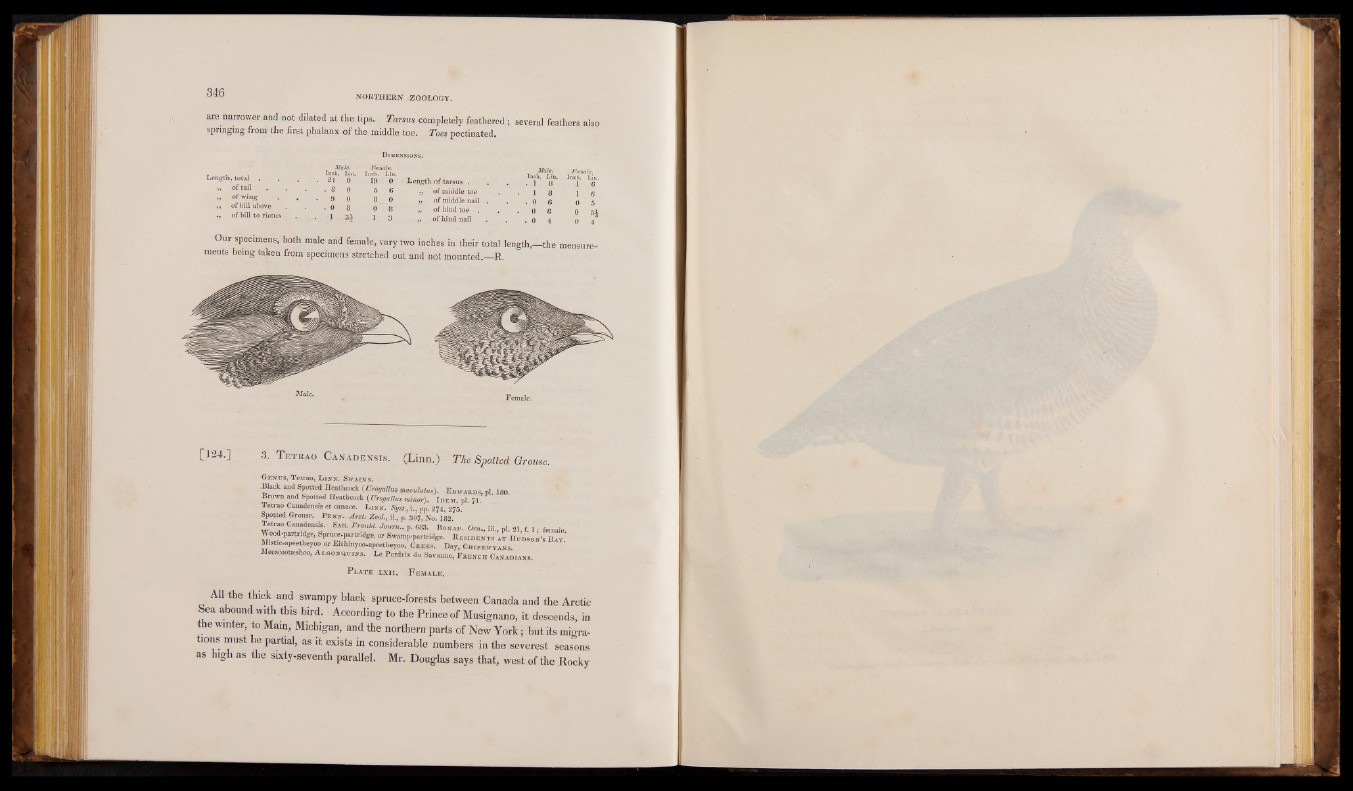
NORTHERN ZOOLOGY.
are narrower and not dilated at the tips. Tarsus completely feathered; several feathers also
springing from the first phalanx of the middle toe. Toes pectinated*
Female.
i, total . .
of tail 19 o ’ . . 8 0 Length of tarsus . of wing . , 5 6 • 9 0 ,, of middle toe of bill above . 0 8 8 0 ii of middle nail of bill to rictus 0 8 . 1 3i 1 „ of bind toe . 3 " „ of hind nail
Oar specimens, both male and female, vary two inches in their total length,—the measurements
being taken from specimens stretched out and not mounted.—R.
Male.
. 24 .0 ’
[124.] 3. T etrao Can ad ensis. (Linn.) The Spotted Grouse.
Ge n u s, Tetrao, L in k . Sw a in s .
Black and Spotted Heathcock (JJrogallus maculatus). E dwards, pi 180
Brown and Spotted Heathcock ( Urogallus minor). I d em , pi. 71.
Tetrao Canadensis et canace. Lin k . Syst., i., pp. 274, 275.
Spotted Grouse. P e n n . Arct. Zool., ii., p. 307, No 182.
Tetrao Canadensis. San. FranU. Journ., p. 683. B o nap. Ora., in., pi. 21, f. 1 . fcmato
Wood-partridge, Spruce-partridge, or Swamp-partridge. R e s id e n t s at H u d so n ’s B a t ’
Juistic-apeetheyoo or Eithinyoo-apeetlieyoo, Cu e es. Day, Ch ip ew y a n s
Meescooteshoo, A l d o n u u in s . Le Perdria du Saranne, F r e n c h C anadians.
P late l x ii. F t: male.
All the thick and swampy black spruce-forests between Canada and the Arctic
Sea abound with this bird. According to the Prince of Musignano, it descends, in
the winter, to Main, Michigan, and the northern parts of New York; but its migrations
must be partial, as it exists in considerable numbers in the severest seasons
as high as the sixty-seventh parallel. Mr. Douglas says that, west of the Rocky